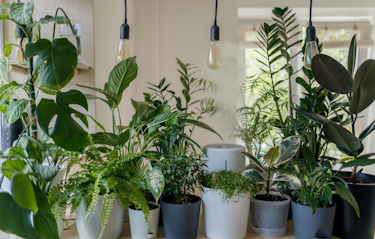
How To Trim Pothos
- Easy Care
- Araceae
- Large
- Evergreen Tropical Vines
We independently select everything we recommend. When you buy through our links, we may earn a commission.
Indoor gardenias are plants that thrive on stability. They require consistent temperature, humidity, and location to thrive, so do your research, find a good place for your plant, and give it time to flourish.
Published on 11 August, 2023 by Oliver Rouane-Williams
Growing a gardenia indoors requires a delicate balance. They need to be moist but do not tolerate overwatering. They prefer warm but not hot temperatures. Gardenias prefer about 50% humidity and want it to be kept steady and constant.
Indoor gardenias are smaller than outdoor gardenias.
A gardenia (gardenia jasminoides), also known as cape jasmine, can be grown as either a houseplant or an outdoor plant. An indoor gardenia will likely be smaller than an outdoor one out of necessity, as most people keep indoor plants pruned down to fit the space they have allocated. Outdoor gardenias can grow into 6-foot shrubs with flowers 4-5 inches across.
How do you know if your plant should be kept inside or out? When a nursery labels a gardenia a houseplant, it means it has been in a greenhouse its whole life and may not be hearty enough to withstand cold temperatures or outdoor elements. Like many plants, different cultivars can tolerate varying climates.
Some people like to display potted gardenias so that they can leave them outside during the warm months and bring the plants inside during the winter months.

Gardenia houseplants are typically on sale in the spring and summer, which is also when they bloom. If you start looking in early spring, you can grab a gardenia evergreen shrub at the beginning of the growing season.
Buying them early in the growing season will help the plant acclimate to your indoor environment before its dormancy period in the fall and winter.
When your goal is to produce fragrant flowers indoors, there are some things you can do to facilitate the process:
Humidity: Gardenias love high humidity levels. If the room they are kept in does not have at least 50% humidity, consider using a humidifier or pebble tray to increase the humidity.
Light: Gardenias require 4-6 hours of light daily in order to bloom. They enjoy morning sun and afternoon shade.
Potting: When potting your gardenias, it is important to keep the soil moist but allow for proper drainage. It is crucial that the pot have adequate drainage holes to prevent root rot.
Temperature: Gardenias grown indoors prefer temperatures between 60-75 degrees Fahrenheit. If you like to set your gardenias outside, they can be left out for warmer daytime temperatures and brought inside at night.
Pests: Spider mites, aphids, mealybugs, whiteflies, or other pests can negatively impact growth and plant health.

Gardenias are the Goldilocks of houseplants. Their watering schedule must be just right to thrive and bloom indoors.
They require about an inch of water each week. Keep the soil moist, but not soggy. Do not over-water the plant, but do not let it dry out between waterings.
The gardenia’s soil should be moist to the touch, but your finger should not sink in.
If you’re experiencing bud drop (where unopened flower buds fall off the plant), this is usually a sign that your gardenia is unhappy with its watering schedule.
An acid-loving plant, gardenia requires acidic soil with a pH of 5.0-6.5. Use well-drained soil that is organically rich. One way to ensure your plant has adequate drainage and nutrients is to mix in some mulch, perlite, or peat moss with the potting soil.
Yellowing leaves in gardenias are usually a sign of nutrient deficiency. The acidic soil gardenias enjoy doesn’t hold nutrients like nitrogen, iron, and magnesium well.
Choose a fertilizer specifically for acid-loving plants, and feed your gardenia every two weeks during the growing season.

When repotting your gardenia plant, choose a pot that is 4-6 inches larger than the one it was originally in. The roots want the room to stretch out and expand for a happy plant.
A gardenia plant thrives in direct sunlight in the morning but needs some afternoon shade. Bright light and sun may facilitate the growth of beautiful blooms, but too much direct light can lead to wilting. Like most flowering plants, they require a delicate balance.
To prune your gardenia plant, use a pruning knife or clean scissors. You can cut back up to one-third of your indoor gardenia to support new growth and keep it bushy.
Once your gardenia flowers, deadhead flowers that wilt and turn brown.
Delivered to your inbox every Saturday morning








